(March 2006)
Back to a sculpture from this year. I've posted this one earlier in it's clay form and bisque fired form. Now here it is after it's been high fired.
High firing is as the name suggest done at a much higher temperature. A special kiln is used for high firing. One of the things that happens in high firing is metals within the kiln will vaporize and condense on the pieces. Particularly iron oxides. This gives the pieces a warm glow after the firing. The clay also takes on more of a stone look then the very white crisp look after bisque firing. In this case I washed the piece in an oxide called rutile. This enhanced the natural oxide effect of high firing.
One other thing that occurred during high firing is two cracks formed. This was no surprising, I could see them forming in the bisque fired stage. They also correspond to places where I tried to join to blobs of clay after the clay had dried a little to much to be worked.
The cracks aren't serious, and don't pose a risk of propagating across the piece. They will make it a little weaker if dropped, but I'm not planning to do that intensionally.
Here are the four stages, clay, bisque fired, rutile applied and high fired.
Friday, June 09, 2006
Subscribe to:
Post Comments (Atom)
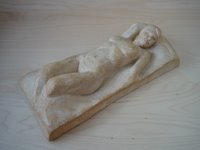
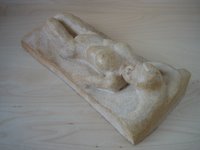
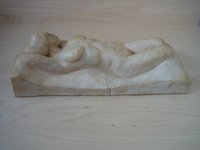

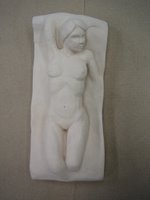
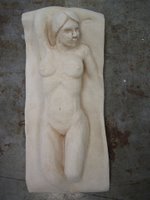

No comments:
Post a Comment